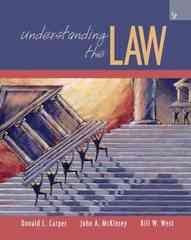1. In the class, we used comparative static analysis to derive the incidence of a per unit tax, imposed on seller, on both the seller and buyer. Use the same method to derive the incidence rates when the tax is imposed on buyers. Use your results from question 1, to answer the following question: Suppose in market for truck drivers, the labour demand curve is W = 10 2L and labour supply curve is W = 2 + 2L. Suppose government requires employers pay $10 per driver that it will use to finance certain government programs for truck drivers. a. b. What is the effect of this policy on the market for truck drivers? How is the incidence of this tax distributed between employers and employees? Will this distribution change if the tax fell to $5? Explain. What is the net gain or net loss to the society from a 510 tax? Will this net gain or net loss change if the subsidy per worker fell to $5? Explain. 3. Suppose that U = {0.2q1" + (2|.8q2'1)'1 iv. What is the elasticity of substitution? If q1=O.5, and q; = 1, what are the absolute and relative income shares of each good? What if now ql rises to 1? Is this consistent with your nding about the elasticity of Substitution? Explain. Write the regreSSion equation whose results will give you the result you found in part 'a above. Assume the intercept term to be (In. I Now suppose prices of each good are p:. p: and income is m per period. V. vi. Obtain the demand functions of qi and Clz. Do they satisfy the property of homogeneity? What are the income and price elasticity of demand for good 1? What is the cross-price elasticity of demand? A consumer has a utility function of the type U(x1, x2) = min (xi, x1). What is the consumer's demand function for good 1? Consider the indirect utility function given by Vim, p2, m] = mflpi + p2). What are the demand functions for goods 1 and 2? What is the expenditure function? In class method of deriving tax incidence. demand D ( p * ) - Q * = 0 supply s ( p * - 6 ) - Q* = 0 do = esir at es,p - ep, r d Q RD,p - esip Q dt Rsip - eDip Ratio between consumer and producer do* =_ es,p dp # - 1 ED, P de Since the producer has to receive p"- t then the effect of the fox is d ( p * - t ) = dp * - 1 dt which gives the price the produce actually receives








